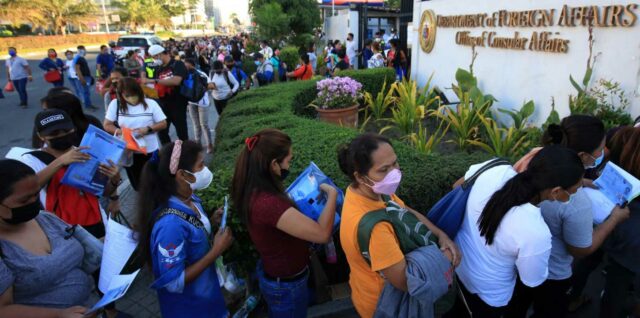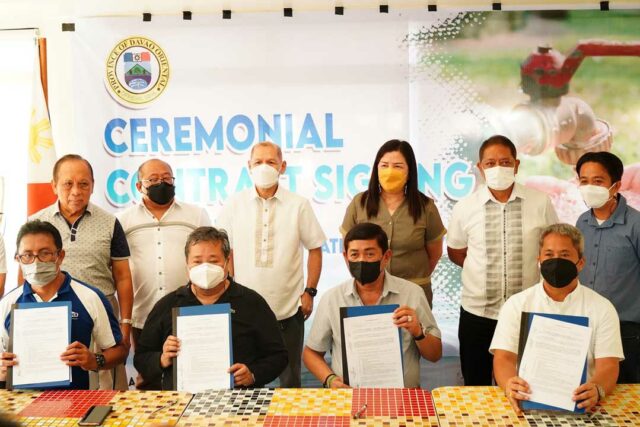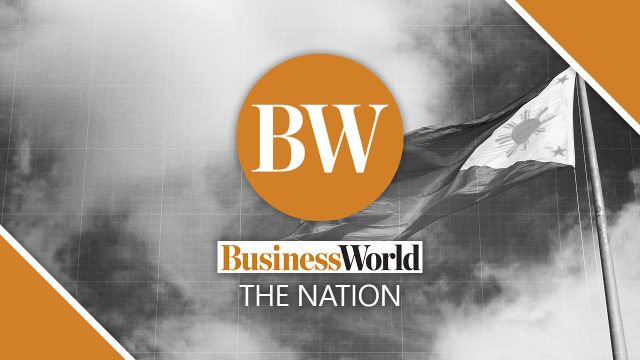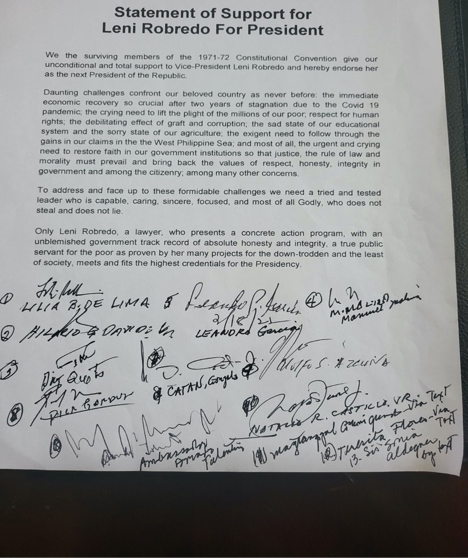Lacson leaves party that now supports Robredo’s candidacy
SENATOR PANFILO Panfilo M. Lacson, Sr. on Thursday announced that he will now be running for president as an independent candidate after leaving Partido Ng Demokratikong Reporma, which announced on the same day its endorsement of Vice President Maria Leonor “Leni” G. Robredo.
“Today, I officially announce my resignation as Chairman and member of Partido Ng Demokratikong Reporma, which effectively makes me an independent candidate for the presidency in the upcoming May 2022 elections,” he said in a statement.
Mr. Lacson said he was informed on Wednesday by the party’s president, Rep. Pantaleon D. Alvarez, “that their slate in Davao del Norte, led by the party secretary-general and Provincial Governor Edwin Jubahib, has decided to endorse another presidential candidate.”
The senator took his oath as the party’s chairman in July, a few days after he officially announced his candidacy for the country’s top seat. He has been a member of the Partido Reporma, his first party, since 2004.
Commission on Elections (Comelec) Commissioner George M. Garcia told reporters in a media briefing Thursday that Mr. Lacson’s party affiliation will not change in the ballot.
“As far as the Comelec is concerned, whatever his or her party was at the time of the filing of the COCs (certificates of candidacy) will be his party for the purposes of the ballots,” he said.
Former House representative Francisco Ashley L. Acedillo, the party’s spokesperson, and several other party members have also resigned to support Mr. Lacson’s candidacy.
The senator and former police chief said he has no intention of backing out from the race.
“Like a true-blooded warrior that I am all my life, I will continue this fight in pursuit of my quest to serve my country and our people, as your Chief Executive – if God and the Filipino people will it, come May 9, 2022.”
ROBREDO
On Thursday afternoon, Mr. Alvarez formally announced Partido Reporma’s support for Ms. Robredo, who was in Davao Region for campaign sorties.
“We reasonably believe that the only realistic option at this point, with roughly a month and a half left, is to converge with Leni Robredo’s campaign,” Mr. Alvarez, a former Duterte ally, said in a statement.
He said Ms. Robredo represents ideals “which are substantially in line with the aims of Partido Reporma: to reform government and provide a better future for Filipinos.”
Mr. Alvarez said his partymates and ground leaders will work to boost the opposition bet’s candidacy.
Mr. Alvarez was among the President’s defenders when he was still the head of the lower chamber. He once slammed Ms. Robredo and called her shameless for criticizing the administration’s drug war that has killed thousands of suspects.
The ex-Duterte ally also eyed filing an impeachment complaint against Ms. Robredo in 2017, but it was not pursued.
The impact of Partido Reporma’s endorsement on Ms. Robredo’s campaign machinery “depends on how many people in the party will carry her candidacy,” said Maria Ela L. Atienza, a political science professor at the University of the Philippines.
“This is because most political parties in the Philippines are weak and Partido Reporma is not a big party in the first place,” she said in a Viber message.
However, Ms. Atienza pointed out that the former House speaker “was able to muster support to defeat Hugpong ng Pagbabago candidates” in Davao del Norte in the 2019 mid-term elections.
Hugpong ng Pagbabago is a regional party led by Davao City Mayor and vice-presidential candidate Sara Duterte-Carpio, the President’s daughter.
“If he can muster the same support for VP Leni, this is a sizeable number,” she said.
Earlier in the day, an estimated 6,000 supporters showed up at a grand rally for Ms. Robredo and her running mate Senator Francis “Kiko” N. Pangilinan in Davao del Sur, another province in a region that is considered as the Dutertes’ bailiwick.
The opposition candidate, who has managed to get endorsements from opposition groups from across the Philippine political spectrum, was able to gather a record number of supporters in several areas in southern Philippines in previous weeks.
Ms. Robredo defeated Mr. Marcos in the 2016 vice-presidential race by just over 260,000 votes. There were more than 54.36 million registered voters that year with an 81.95% turnout.
Mr. Marcos, whose presidential candidacy has been opposed by civic groups due to his failure to file income tax returns in the 1980s, is now backed by large traditional political parties in the country, including the PDP-Laban faction headed by Mr. Duterte.
The President himself has yet to endorse a successor.
The National Unity Party (NUP) on Thursday announced its endorsement of Mr. Marcos following a meeting between him and party officials the previous night.
NUP, which was founded in 2010 by ex-President Gloria M. Arroyo’s former allies, lauded and echoed Mr. Marcos’ call for unity, which has been criticized for lack of substance.
NUP is currently headed by Elpidio Barzaga, Jr., a district representative and a member of a traditional political clan in vote-rich Cavite.
The late dictator’s heirs still owe the government billions of pesos in estate and income taxes, the agency tasked to recover the family’s ill-gotten wealth said last week. — Alyssa Nicole O. Tan and Kyle Aristophere T. Atienza











